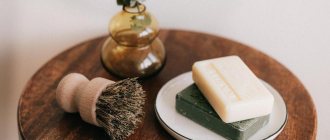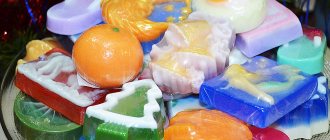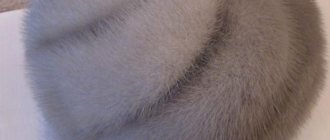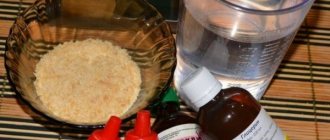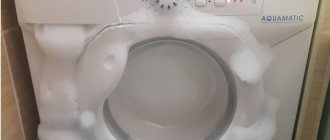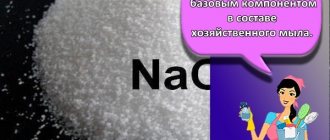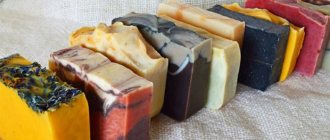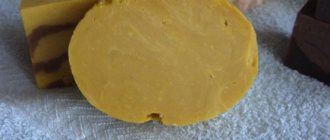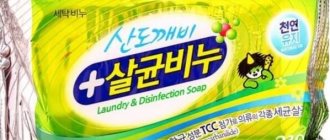Soap tends to run out and there is nothing you can do about it. The piece becomes thinner and now you have a thin small piece of soap in your hands, which is inconvenient to use, all that remains is to throw it away and open a new package. But there are craftsmen who have figured out how to stop throwing away soap remnants by making new fragrant and beautiful soap from them.
It's quite simple, fast and fun. The first step is to accumulate raw materials. There shouldn't be any problems here; the remnants won't spoil. You need to get a separate container and put used soap there for several months. When the required amount has accumulated, you can begin experimenting.
Liquid soap without heat treatment
There is a great way to make a good portion of liquid soap from small pieces of old soap. If desired, you can add fragrances and aromatic oils to the soap concentrate and then you will get a complete shower gel. So, for cooking you will need the following tools:
- Grater, preferably fine. The smaller the soap shavings, the better they will dissolve.
- A bottle with a dispenser for the finished product. You can use an empty bottle of shower gel or shampoo.
- Wooden spatula for mixing.
Required ingredients:
Vasilisa Volodina named dates of birth that threaten excess weight in 2022
Remove the bottom leaves of the tomatoes. Why do gardeners do this?
For any occasion and for every taste: stylish styling ideas for medium-length hair
- A bottle of glycerin, you can buy it at any pharmacy, it is inexpensive.
- Lemon juice or citric acid.
- Hot water.
- Liquid additives, for example, essential oil, honey, you can use ground coffee if the aroma is pleasant. Some needlewomen even add cocoa powder and create a chocolate-flavored gel.
If you make soap frequently, it is better to purchase a separate grater. Because small pieces of soap may remain in the food grater and get into the food. Citric acid or juice is used as a preservative. The substances that protect soap from spoiling are destroyed by heat, so new soap needs a new preservative. It is better to use natural lemon juice, in which case the vitamins will bring additional benefits to the skin.
Useful tips for a beginner soap maker
Natural products can be used as dyes. Here are some options:
- brown color is given by coffee;
- orange - sea buckthorn oil, carrot juice;
- red - beets;
- yellow - calendula, saffron, turmeric;
- green - henna, sage;
- blue - chamomile essential oil;
- beige - milk.
Added ingredients must be healthy and safe
You can also add useful ingredients to solid soap, and in this case the list is more varied than in the case of liquid soap:
- ready scrub,
- oatmeal flakes,
- ground coffee,
- cream,
- essential oil,
- herbal decoction,
- milk,
- honey,
- pieces of leaves,
- citrus peels,
- dyes
- etc. to the taste and imagination of the manufacturer
Possible mistakes in soap making
The first pancake, as they say, can come out lumpy. The same goes for making soap. In an effort to make good and healthy soap, you can overdo it. If the result saddens you, then study possible errors and their causes.
Table: soap maker errors and how to eliminate them
| Problem | Possible reasons | Way to resolve the error |
| The soap crumbles and breaks. | There are too many solid additives, the soap is dry, there are many inserts of other soap in the soap | Add a smaller amount of scrubbing particles, after production, pack the soap in plastic film, spray liberally with alcohol on small soap parts so that they stick together well |
| The salt added to the soap has dissolved. | The salt was poured into too hot water or added to soap that was still hot. | Add salt to warm soap mixture |
| The scrub soap is very harsh. | A large amount or very large particles of scrubbing elements have been added | Before adding to soap, grind hard particles until crumbly and apply sparingly. |
| There was mold on the soap. | Fresh fruits, juices, etc. were used. | Only dried fruits should be added to soap, and decoctions should be used instead of juices. |
| The soap does not foam well or cracks. | The soap contains too many oils, too many solid particles and decorating additives, the soap is dry | To 100 grams of soap you should add no more than 0.5 teaspoon of oils, scrub and decorations should be no more than 1 teaspoon, soap should be stored in plastic wrap and not for too long. |
| After using the soap, an allergic reaction appeared. | Soap contains components that cause allergies. Most often these are essential oils. | Before using oils, perform a sensitivity test by applying a drop of oil to the crook of your elbow. Do not add oil to soap for children and pregnant women. |
| Soap stains the skin. | There are too many dyes in the soap. | For 100 grams of soap, 1–3 drops of well-dissolved dye is enough. |
| The soap turned out greasy. | Too much essential oil or glycerin has been added to the soap. | If the soap contains glycerin, then you no longer need to add it. |
| The film became covered with soap fumes. | the soap was packaged half-dry | Unpack the soap and dry it; after making the soap, you need to dry it for at least a day. |
| The soap cannot be removed from the mold. | The product is not dry enough yet. | Let the soap dry and place it in the freezer before removing it. |
Safety precautions when working with soap
Those who are planning to recycle soap for the first time need to know important rules to ensure the safety of the upcoming work:
- The room in which new soap is made, usually the kitchen, should be well ventilated. An excess of various odors and elements can cause an allergic reaction or slight intoxication.
- The dishes in which the soap is melted must be glass, ceramic, or enameled. You can use stainless steel containers. But galvanized, aluminum and tin pans can react with the alkali contained in the soap and will be damaged.
- A wooden spatula is ideal for mixing soap, while silicone and rubberized ones can leave an unpleasant odor, especially if they are made from low-quality raw materials.
- Young children should not be allowed near the water bath. The structure may be unstable, but the child is very inquisitive.
- When working with alcohol, you need to wear a mask to avoid inhaling harmful fumes.
Preparation
- We rub our soaps on a fine grater.
- Pour a small cap of glycerin into our bottle with a dispenser. Glycerin is added to soap as a cream, it serves to soften the skin. The usual proportions are one tablespoon per liter of finished soap. But if you add a little more or less, nothing bad will happen.
- The shavings should fill the bottle with a dispenser by about two-thirds, pour it directly on top of the glycerin.
- Let's boil the water. If you wish, you can pour soap shavings not with plain water, but with a decoction of aromatic herbs or hot green tea. It contains antioxidants that rejuvenate the skin. In addition, green tea has a pleasant aroma.
- Pour boiling water into the bottle, but not to the very top, you need to leave room for adding essential oil.
- We close the bottle and begin to shake vigorously, trying to dissolve small pieces of soap.
- We leave our bottle for several hours until the soap shavings dissolve.
- When the dissolution process is complete, add aromatic essential oil, honey or milk to the solution. The proportions are as follows: per 100 grams of soap you can add a third of a teaspoon of essential oil, up to seven drops of lemon juice and no more than thirty grams of liquid honey. You need to be careful with milk: you can only add half of the weight of the chips. If you had two tablespoons of raw materials, then you can add no more than one tablespoon of milk.
- Shake the soap again and you can start using it.
How to use leftover soap
We use soap to wash our hands, do laundry or wash dishes. When a bar of soap becomes thin, flat and brittle, it becomes impossible or simply inconvenient to use. Practical housewives are in no hurry to throw away remnants, but come up with new ways to use them:
- The most popular move is to attach a soap remnant to the new soap. To do this, both pieces need to be wet and connected to each other.
After two or three uses, the soap remnant is firmly imprinted into a new piece of soap and is completely consumed. - Needlewomen use soap in cutting sewing. But not every woman is engaged in sewing, and even one piece of soap will be enough for this task for a long time.
The soap leaves clear lines necessary for cutting, is easily washed off, and leaves no traces - Several remnants of soap can be placed in a stocking or fishnet, tie a knot and use the resulting bag of soap for laundry, washing dishes, instead of a washcloth. The same bag can be hung near the street washstand in the garden: the soap will not be lost, it will dry out and will always be at hand.
Soaps folded into a similar bag will become convenient for use. - Leftover scented soap can be placed in the linen closet between stacks of bedding or clothing. Items that have been left unused for a long time will have a pleasant aroma instead of a musty smell.
Place scented bars of soap between piles to protect against the unpleasant smell of stale items. - Remnants will help decorate windows: in winter, you can use them to glue snowflakes and other New Year paraphernalia to the windows; they will also help secure the lace tulle to the glass.
Tulle glued to the glass will help limit the view from the street, protect from the sun or decorate the window - To insulate windows, you need to soak pieces of fabric in soapy water and seal the cracks.
The soap will reliably stick the fabric to the surface of the window, leave no marks and can be easily removed - If the zipper on your clothing gets stuck, you can lubricate the zipper with dry soap.
A zipper coated with soap is easier to close. - Poorly moving desk drawers can be lubricated with soap to improve sliding.
You can lubricate the wooden grooves along which the box moves with soap. - From the remnants you can make a new full-fledged bar of soap.
From old bars of soap you can make new bars with various useful additives
Supplements
The principle of “do no harm” applies here. You cannot add all the additives that are in the house to one bottle of soap. Either milk with honey or essential oil. You can mix several flavors, but then you don't need to add anything else. If you overdo it with additives, the soap will not foam. And excessive essential supplements can provoke an allergic reaction.
I washed myself with perfume, sacrificing lunch: the unknown life of the artist Mikhail Vrubel
The bulbs will be juicy and large: how to choose the right onion set
Visitors to Russian cinemas will be prohibited from bringing in their own food and drinks.
If you add baking soda to the prepared liquid soap, about a teaspoon per half liter, you will get dishwashing detergent. In addition to soda, you can add a tablespoon of mustard, then this soap is well suited for washing greasy dishes.
What tools are needed?
Special molds will help give the soap an interesting or unusual appearance. The soap will harden in them.
Commonly used:
- Old silicone baking utensils.
- Children's molds for making Easter cakes.
- Special containers for soap making.
They should be made of silicone, rubber, plastic.
Particularly popular forms are:
- colors,
- animals,
- geometric shapes.
It all depends on the capabilities and imagination of the person making homemade soap. As a result, the finished product has an unusual shape.
Be sure to read:
The most convenient mop for washing floors: 8 types and how to use the spin cycle
Do-it-yourself solid soap from soap remnants
A water bath is often used to melt soap. With this method, the soap will not burn, will not boil away and will be sterilized. The dissolution process occurs gradually, which is very convenient, especially for novice soap makers. It is easy to achieve the desired consistency in a water bath. It is best to use a separate container for soap, especially if you plan to repeat this experiment. If you don’t have a separate container, a regular glass microwave-safe dish will do.
Cooking soap
Place the pan over medium heat and wait until the oils and soap melt. Then mix all the ingredients. Most likely, African black soap will only melt slightly, so you will have to puree it in a blender. Once you have a uniform consistency, move on to the next step.
Add potassium hydroxide solution to the pan. Mix everything together with a blender. Place the soap on low heat. As it cooks, the African soap will dissolve and float to the top. If this happens, simply stir the mixture.
Finish your preparations. You will need about 2 hours. Stir the mixture the first time after 45 minutes, and then after another 15. After that, check the result. Scoop up a small amount of soap with a spoon. Pour the liquid into a cup of hot water and let it dissolve. If you get a clear substance, it means your soap is ready. If not, then you need to let it cool a little more.
Dilute the soap with hot boiled water (about 1.2 liters). Pour the liquid into the pan and stir well. Place the pan over low heat and cook for 2-3 hours. After this, add another 600 ml of hot water. Stir the liquid from time to time. The soap must be heated for at least 2-3 hours.
Preparation
- Place the grated shavings in a container for remelting. Try to avoid a variety of shades; when melted, the soap may turn into an unexpected color. If mixing is unavoidable, melt the pieces separately. In addition to shavings, you can use small pieces cut with a knife, but then the melting process will be lengthened.
- Bring the water to a boil in the bottom pan, the base of our water bath.
- Place the container with the shavings on the lower pan, preventing the pan from coming into contact with boiling water. The soap solution should not boil.
- Grease the molds with oil and pour in the hot mixture to harden.
- Avoid exposing the soap to direct sunlight.
- The frozen soap must be removed from the mold and wrapped in cling film.
Precautions when making soap
When working with soap, as with alkali, you must follow safety precautions:
- Boil soap in a ventilated area. When the windows are closed in a stuffy kitchen, aromas concentrate and cause dizziness;
- suitable dishes are ceramic, glass and enamel, as well as stainless steel bowls. Zinc, aluminum and tin oxidize. As a result, metal utensils and product deteriorate;
- mix the raw materials with a wooden spatula. Metal is not suitable for the same reason as metal utensils. The silicone and rubber heat up, and the smell of the polymer is mixed with the aroma of the soap.
When preparing soap in a steam bath, you need to wear thick oven mitts and make sure that the container with soap remnants is held firmly on the pan of boiling water.
Melting soap in the microwave
Soap shavings should be filled with a small amount of water and placed in the microwave for fifteen seconds. Stir the resulting mixture and put it back in the oven for the same amount of time. Repeat this procedure until the soap shavings are completely dissolved.
Another 67 bike sharing stations with a thousand bicycles will be installed in Moscow
Viennese waffles, yogurt and juice: foods that are best not eaten before 10 am
How to do housework correctly: the guy “challenged the carpet to a duel” (video)
Coffee soap-scrub
If, while preparing liquid soap, you add ground coffee to the scrubbing ingredients, for example, you will get a good homemade scrub.
It requires the following components:
- 50 g soap or base;
- 4 glasses of water;
- 0.5 cups cream;
- 2 spoons of sugar;
- 1 spoon of ground coffee (additionally you can add the same amount of cocoa powder);
- 0.5 tablespoons of glycerin or any essential oils;
- half an ampoule of vitamin A and E.
Prepare a homemade scrub like this:
- Grind the soap or base.
- Mix water with cream and put on fire.
- Add the shavings and stir until dissolved.
- Add sugar, coffee and cocoa to the mixture. Mix.
- After cooling, add vitamins A and E, oil or glycerin. Mix.
Soap pie
Remnants of various colors are suitable for this recipe. The brighter the raw materials, the more colorful the cake will be. We cut some of the soap into pieces, and melt some in any convenient way. If the pieces are too faded, you can use food coloring: dilute it in water and pour it over the cubes for a while. The paint will be absorbed and the soap pieces will acquire rich shades.
The pieces need to be sprinkled with alcohol and poured with warm melted soap. Also apply a little alcohol on top of the resulting cake. This procedure will protect our cake from air bubbles that appear during pouring.
Auxiliary ingredients and their properties
Home soap making uses a very large number of additional ingredients. These can be improvised products (honey, milk, oils) and professional components purchased in specialized stores. Below are the most common aids used in making handmade soap.
- Jojoba oil is a popular ingredient in home soap making and is recognized for its moisturizing effect. If you add it to homemade soap, you get a product that has a soothing and softening effect.
- Coconut oil is a common ingredient found in many skin care products. Soap with the addition of this component has good foaming, softening and protective effects.
- Almond oil (sweet) is one of the original ingredients used in home soap making. By adding it to solid soap, you can get a product with a light and pleasant aroma, as well as good cleansing properties and airy foam.
- Milk is a component that provides hydration and nutrition to the skin. Soap with the addition of raw or boiled goat or cow's milk makes the skin softer and fresher. Powdered milk can also be used in soap making.
- Ground coffee (or the grounds of sleeping black coffee) is an ingredient used in homemade masks and peels. If you add this component to your homemade soap, you can get a product with good cleansing and exfoliating properties. However, you cannot use such soap for a long time, since coffee grains will begin to irritate and injure the skin.
- Honey is a natural and healthy product that has a regenerating and softening effect. However, soap makers use it with caution, given that it can cause allergic reactions.
- Aloe juice is an excellent herbal component on the basis of which you can create soap with excellent regenerating properties. This ingredient can have a calming effect on irritated and inflamed skin and refresh the complexion.
- Poppy is one of the excellent components that is used in soap making to impart a number of beneficial properties to the final product. Soap, which contains small poppy seeds, exfoliates the skin well and quite gently and removes traces of dryness.
- Ground cinnamon is another ingredient that not only provides the soap with a pleasant aroma, but also gives it good exfoliating properties. However, this soap, like soap with added coffee, cannot be used for a long time. Prolonged use of such products may cause minor injuries and localized damage to the skin.
- Healing clays (red, white, blue) are natural ingredients used to prepare a variety of facial and body skin care products. Adding natural clays to homemade soap gives the final product an interesting shade, and also enhances its antibacterial, soothing and drying properties. This soap is good for oily and acne-prone skin.
- Oatmeal or bran is a hypoallergenic ingredient that gives homemade soap the properties of a mild exfoliant. This soap has gentle cleansing and drying properties, it helps restore a healthy complexion, slightly narrow pores and eliminate redness. Soap with the addition of oatmeal and bran cleanses without causing irritation, so it is recommended for teenage, sensitive and delicate skin.
- Decoctions of medicinal herbs (chamomile, St. John's wort, calendula, thyme) are herbal ingredients that provide homemade soap with an anti-inflammatory, antibacterial and regenerating effect.
- Other herbal decoctions (oak bark, linden bark, birch leaves) are another popular component that often appears in traditional medicine recipes and homemade skin care products. The complex of actions that soap with the addition of such components will have is largely determined by the properties of the plant raw materials themselves. Thus, oak bark has an astringent effect, it slightly tightens pores and soothes the skin. Linden – restores complexion, rejuvenates. Birch leaves – relieve inflammation, cleanse and soothe the skin.
